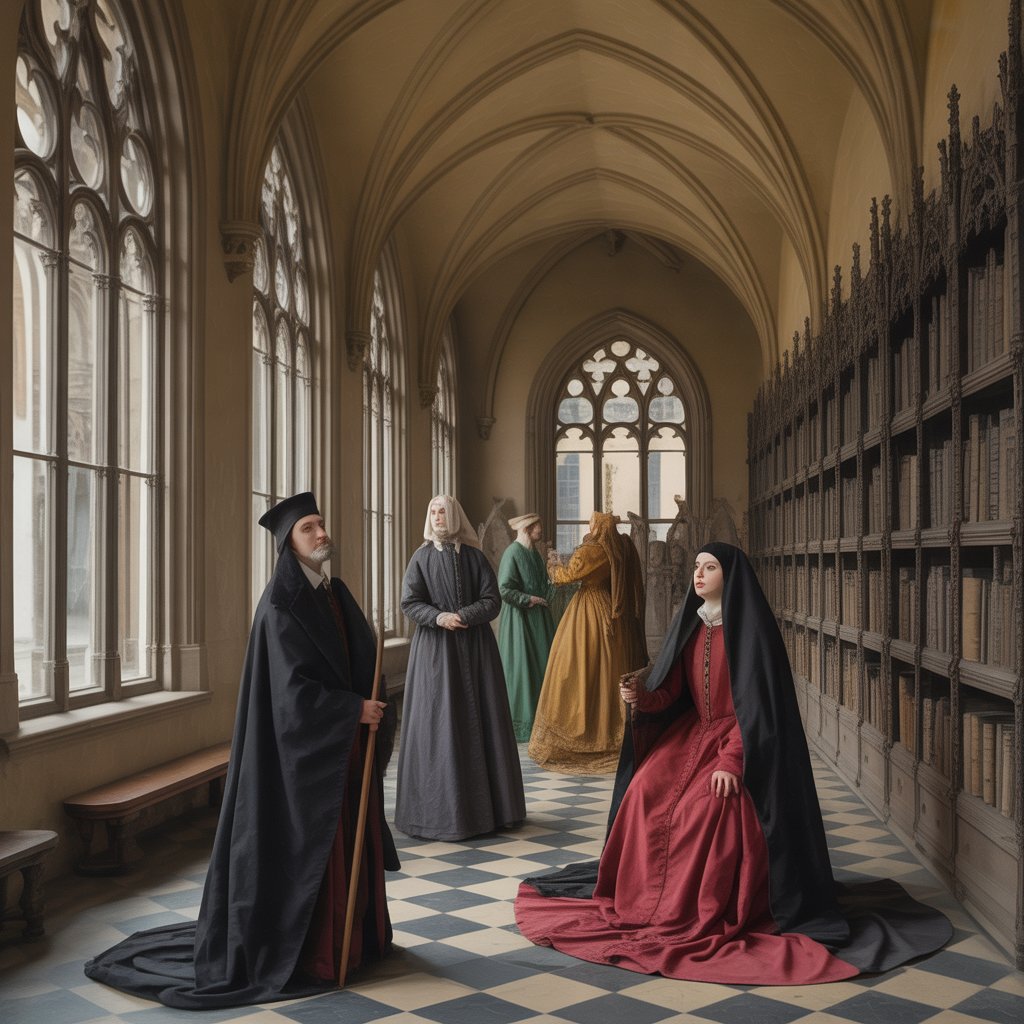What is Gothic Art — History, Characteristics & Major Artists

When we hear the word Gothic, most people imagine dark cathedrals, dramatic paintings, or mysterious atmospheres. But the reality of this style is much deeper. Gothic Art was a dominant artistic movement in Europe for centuries, influencing not only architecture but also painting, sculpture, and literature. It shaped some of the most iconic monuments in history and laid the foundation for future art styles, including the Renaissance.
What is Gothic Art?
Gothic Art emerged in Paris during the mid-12th century and spread across Europe until the 1500s. Unlike earlier styles, it emphasized naturalism, light, and grandeur. While Gothic Architecture became famous for its pointed arches, rib vaults, stained glass, and flying buttresses, the paintings and sculptures of the time focused on realism, making holy figures appear more human and relatable.
The Origins of Gothic Style
After the fall of the Roman Empire, Europe entered the so-called “Dark Ages,” where culture and creativity declined. But by the 12th century, cities began to flourish again, particularly in France. Wealthy patrons, often linked to the Church, supported artists and architects.
A key figure was Abbot Suger, who rebuilt the Abbey Church of St. Denis in 1137. His vision of symmetry, proportion, and divine light gave birth to a new architectural movement. Stained glass windows, tall arches, and luminous spaces transformed worship into a spiritual and visual experience. This was the beginning of Gothic Architecture.
Characteristics of Gothic Art
- Use of pointed arches and rib vaults
- Flying buttresses for structural support
- Large stained glass windows to bring in natural light
- Sculptures and paintings focused on human expression and realism
- A blend of religious symbolism with artistic innovation

Famous Examples of Gothic Architecture and Art
Notre-Dame de Paris (1163)
Perhaps the most famous example of Gothic Architecture, Notre-Dame embodies all the elements of the style: pointed arches, ribbed vaults, flying buttresses, and intricate sculptures. Its cultural importance remains unmatched even today.
Reims Cathedral (1211)
Known for its incredible sculptures, the Reims Cathedral demonstrates how Gothic Art embraced realism. Holy figures were depicted in lifelike poses, a major shift from earlier rigid styles.
Très Riches Heures du Duc de Berry (1412)
This illuminated manuscript, created by the Limbourg brothers, represents Gothic Art in painting. The illustrations show depth, realism, and vibrant storytelling, highlighting the movement’s focus on naturalism.
Notable Gothic Artists
- Duccio di Buoninsegna
- Konrad Witz
- Cimabue
- Giotto
Each of these artists contributed to the evolution of Gothic Art, blending religious themes with more natural and expressive styles.
The Legacy of Gothic Art
Although the Gothic era ended by the 16th century, its influence never disappeared. The Renaissance grew out of its focus on naturalism, and even today, Gothic Architecture continues to inspire designers, filmmakers, and artists worldwide. From stained glass windows to dramatic stone carvings, the Gothic legacy shows us how light, structure, and human emotion can combine to create timeless beauty.
Conclusion
Gothic Art is more than an art style—it is a reflection of history, spirituality, and human creativity. From magnificent cathedrals to detailed manuscripts, the movement has left behind masterpieces that still inspire awe. The grandeur of Gothic Architecture and the expressive power of Gothic Art remind us that even centuries later, this style remains one of the most influential and captivating in the world of art and culture.
Recent Posts
Iconic Emo Fashion Trends Through the Decades: An Expression of Identity
September 15, 2025Top Trends in Emo Pants: Baggy, Goth, and Rave Styles You’ll Love
November 5, 2025Baggy Emo Pants for a Bold Everyday Look
October 22, 2025Categories
Related Articles
Ultimate Guide to Pants Emo: Ladies Trip Pants, Tripp Pants & Alternative Style
If you’re ready to take your emo fashion to the next level,...
ByemopantsNovember 21, 2025Alternative Streetwear Pants Men: Ultimate Guide to Emo Pants Style
Looking to stand out with edgy, stylish, and functional fashion? Alternative streetwear...
ByemopantsNovember 18, 2025Ultimate Guide to Rocking Black Emo Pants, Emo Pajama Pants & Tripp Pants in 2025
If you want to level up your emo wardrobe, nothing beats the...
ByemopantsNovember 18, 2025How to Rock Emo Style with Baggy Emo Pants in 2025
If you’re ready to embrace the dark, edgy, and expressive world of...
ByemopantsNovember 18, 2025
















Leave a comment